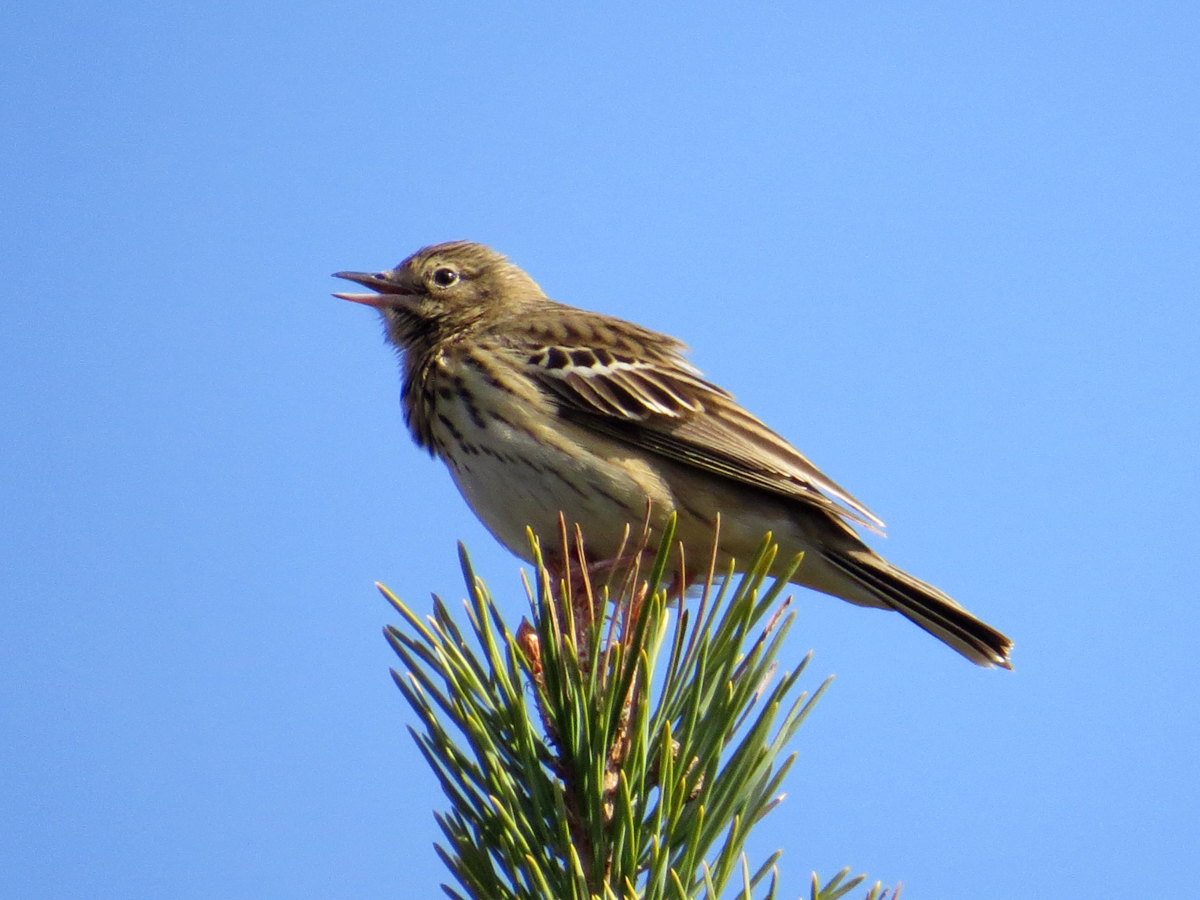
Photo © MPF
The tree pipit (Anthus trivialis) is a small passerine bird which breeds across most of Europe and the Palearctic as far East as the East Siberian Mountains. It is a long-distance migrant moving in winter to Africa and southern Asia. The scientific name is from Latin: anthus is the name for a small bird of grasslands, and the specific trivialis means "common".
The breeding habitat is open woodland and scrub. The nest is placed on the ground, with usually 4–6 eggs being laid. This species is insectivorous, like its relatives, but will also take seeds.
The tree pipit was formally described by the Swedish naturalist Carl Linnaeus in 1758 in the tenth edition of his Systema Naturae under the binomial name Alauda trivialis. Linnaeus noted that the species occurred in Sweden. The specific epithet trivialis is Latin meaning "common" or "ordinary" from Latin trivium meaning "public street". The tree pipit is now placed in the genus Anthus that was introduced in 1805 by the German naturalist Johann Matthäus Bechstein.
Two subspecies are recognised:
This is a small pipit, which resembles meadow pipit. It is an undistinguished-looking species, streaked brown above and with black markings on a white belly and buff breast below. It can be distinguished from the slightly smaller meadow pipit by its heavier bill and greater contrast between its buff breast and white belly. Tree pipits more readily perch in trees.
The call is a strong spek, unlike the weak call of its relative. The song flight is unmistakable. The bird rises a short distance up from a tree, and then parachutes down on stiff wings, the song becoming more drawn out towards the end.
The tree pipit breeds in habitats with a wooded component, including lowland heath and coppice. It is found mostly in open woodland on the boundary with moorland, or open structured oak woodland – therefore heavy thinning is required to produce a gappy character. It prefers low canopy medium-sized trees, where there is low-growing scrub and bramble less than 2 metres high, so that horizontal visibility is relatively high. It likes a mosaic of grass and bracken, but not very grazed short turf, so light to moderate grazing is preferred.
Tree pipits nest on the ground amongst grass or heather tussocks. The nest is built by the female. The clutch of 4 to 6 eggs is incubated by the female. The eggs hatch after 12–14 days. The chicks are fed by both parents and leave the nest after 12–14 days. The nests are sometimes parasitized by the common cuckoo (Cuculus canorus).
Tree pipits mainly eat invertebrates, typically insects but will also eat some plant material. They mostly forage on the ground.
Source: Wikipedia